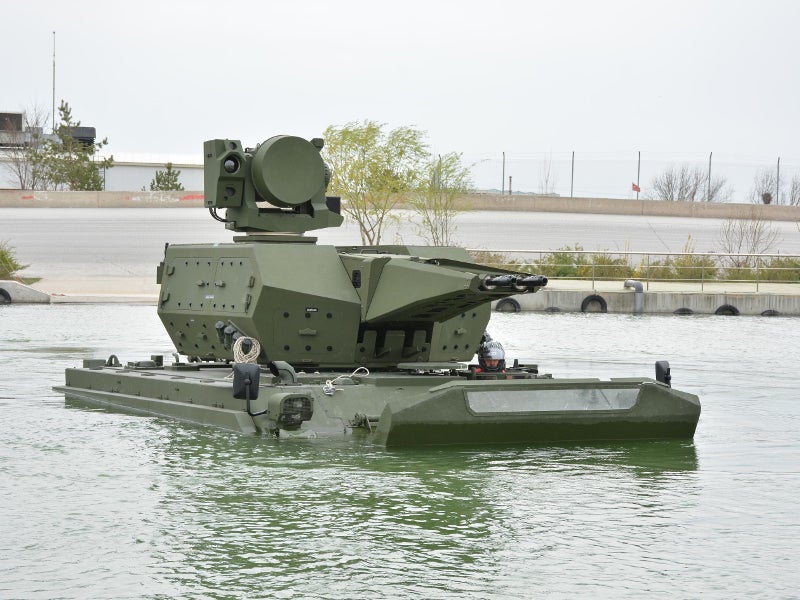
KORKUT is a self-propelled air-defence gun system developed by ASELSAN in collaboration with FNSS Savunma Sistemleri (FNSS), for the Turkish Land Forces. The system is based on the ACV-30 armoured combat vehicle.
The KORKUT system can detect, track, identify and destroy aerial targets. It is capable of carrying out missions on heavy armoured platforms such as main battle tanks and armoured fighting vehicles.
Serial production of the KORKUT systems began in March 2017 and the first batch of vehicles is scheduled to be delivered to the Turkish Land Forces in May 2018.
KORKUT development details
The Turkish Undersecretariat for Defence Industries (SSM) preferred ASELSAN as the prime contractor and FNSS as the subcontractor to develop the Korkut SPAAG system, in 2011.
The contract for the development of the KORKUT tracked vehicle was signed between ASELSAN and FNSS in June 2011. A command and control vehicle and two artillery vehicles were developed and tested successfully by the first half of 2016. The vehicles received final acceptance in October 2016.
Turkish Land Forces placed a contract for the serial production of 40 KORKUT systems and 13 command post vehicles in May 2016. The serial production phase of KORKUT began with the signing of the agreement between SSM and ASELSAN in mid-2016.
ASELSAN and FNSS subsequently signed a subcontract for the production and delivery of the air defence systems in December 2016.
Command and control
The KORKUT system includes a command-and-control vehicle and a weapon system vehicle. The command and control vehicle is capable of executing missions, along with armoured mechanised troops. It can perform target acquisition and tracking with 3D search radar and can generate aerial pictures of the local area.
It also performs advanced thread evolution and weapon assignment algorithms and identifies friendly forces using identification, friend or foe (IFF) system. The vehicle is also installed with an electro-optical (EO) sensor pod. The crew includes a driver, gunner and a commander.
Armament and self-protection of KORKUT
The artillery system features a remotely-controlled turret mounted in the centre roof of the vehicle. The turret is armed with two stabilised 35mm KDC cannons capable of firing high-explosive incendiary (HE-I) and target practice-tracer (TP-T) and air burst ammunition. Each barrel of the 35mm gun can fire 1,100 rounds a minute.
The air defence system can engage air-to-ground missiles, cruise missiles, and unmanned aerial vehicles (UAVs), as well as low-flying helicopters and fighter aircraft within the maximum range of 4,000m. The 35mm cannons are fed by an automatic linkless ammunition feeding system.
The vehicle is armoured with the space laminated armour made of steel and aluminium. It offers STANAG 4569 Level 4 protection against small arms and STANAG 4569 Level 2 blast protection. The vehicle can survive an explosion of 6kg of TNT under tracks. The platform is also fitted for smoke grenade launchers.
Engine and mobility
The KORKUT air defence vehicle is powered by a 600hp diesel engine coupled to a fully-automatic transmission. The engine compartment is installed with an automatic fire suppression system for improved safety. The vehicle is equipped with torsion bar suspension.
Two water jets fitted at the rear of the chassis provide propulsion for the fully amphibious vehicle in water. The vehicle has a maximum road speed of 65km/h, while the maximum speed in water is 6km/h.
The KORKUT system can effectively fire on the move and manoeuvre obstacles such as trenches and river crossings, ensuring superior mobility across rough terrains. It can negotiate a gradient of 60% and side slope of 30%.






